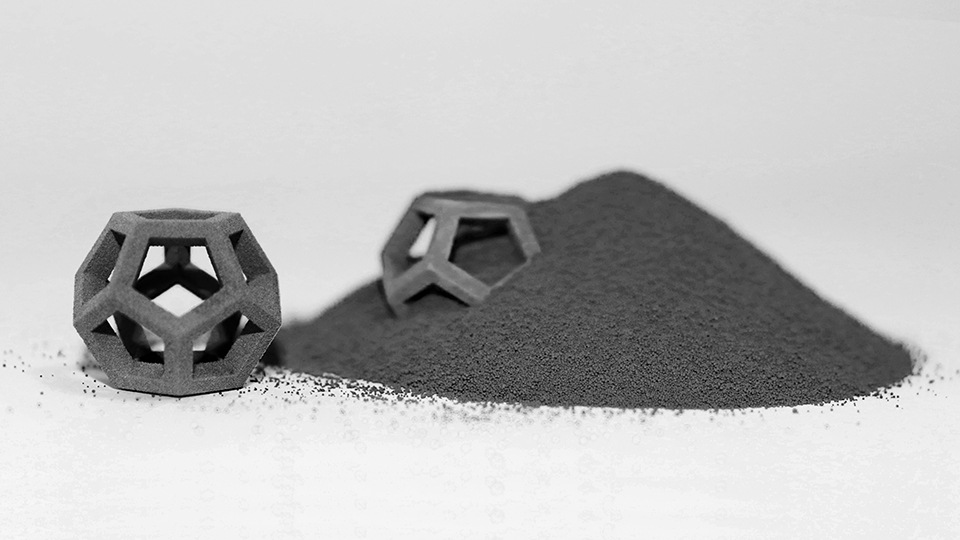Binder jet 3D printer provider ExOne has entered into a collaboration with Global Tungsten & Powders Corp. (GTP), a metal powder manufacturer headquartered in Towanda, Pennsylvania. In this agreement, the two parties will work to advance the use of tungsten powders in metal binder jet 3D printing. The work is expected to have high impact in the production of cutting tools, wear-resistant parts and applications where high electrical and thermal conductivity is required.
“Metal 3D printing using our exclusive approach to binder jetting has exciting and significant consequences for a variety of manufacturers, including those who make parts with cemented carbide and other tungsten composites,” comments Tim Pierce, ExOne Vice President of Metal Commercial Products. “Our latest development collaboration with GTP will help advance the materials necessary to deliver on the vision of producing these parts faster, with less waste and more geometric design freedom.”

ExOne binder jet 3D printed tungsten
Tungsten has the highest melting point of all discovered elements, earning it “the Devil particle” nickname when it is found as a contaminant in other powders. With this value however, comes a remarkable robustness, and it is frequently combined with other elements to make heavy metal alloys, used to make rocket nozzles, turbine blades, and other high-wear components.
ExOne 3D printers, including the X1 25PRO and the Innovent+, are already compatible with certain tungsten alloys. In this new partnership with Global Tungsten & Powders Corp. though, the company will be looking into two new metal matrix composites: cemented carbide (WC-Co) and copper-tungsten (CuW).
New metal matrixes for additive manufacturing
WC-Co is a hard and tough material, superior to carbon steel or stainless steel for the production of cutting tools and wear-resistant parts. Cutting tools made from the material also typically give better surface finish to components than when using tools made from other materials. The material is composed of fine particles of carbide cemented into a composite by the binder metal.

CuW, on the other hand, is a heat-resistant, ablation-resistant, highly thermally and electrically conductive metal matrix. Example applications of this material include electrodes for electrical discharge machining, semiconductor devices, and contacts for vacuum, oil, and gas systems.
Commenting on the conventional production of the these composites Deborah West, Vice-President Business Unit Refractory & Specialty Powders at GTP, explains, “Traditionally tungsten carbide powder is pressed into the desired shape and then sintered to give it strength and density.” By processing these materials via binder jet 3D printing instead, the partners will be able to reduce costs and increase geometric complexity. “Instead of costly and timely mold construction,” West adds, “the parts now can be printed directly in the desired shape, still using sintering technology to achieve the final strength.”
As a market leader for this type of powder, West adds that GTP is “excited to work with ExOne in the development of cutting-edge technology for the additive manufacturing industry.”
For all of the latest additive manufacturing materials news subscribe to the 3D Printing Industry newsletter, follow us on Twitter and like us on Facebook. Looking for a career in this industry? Visit 3D Printing Jobs for a selection of roles in the industry.
Featured image shows binder jet 3D printed tungsten powder. Photo via ExOne



